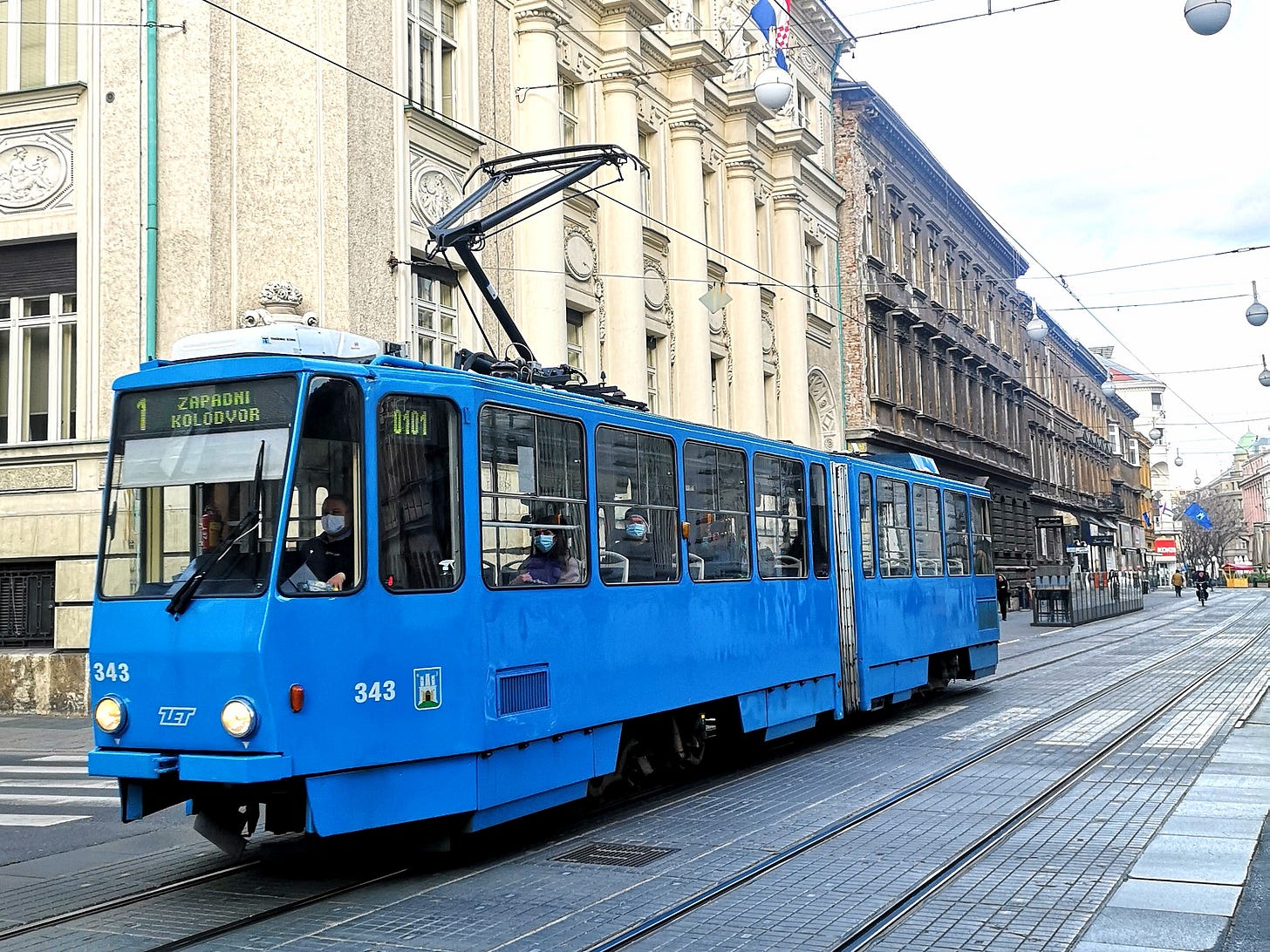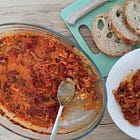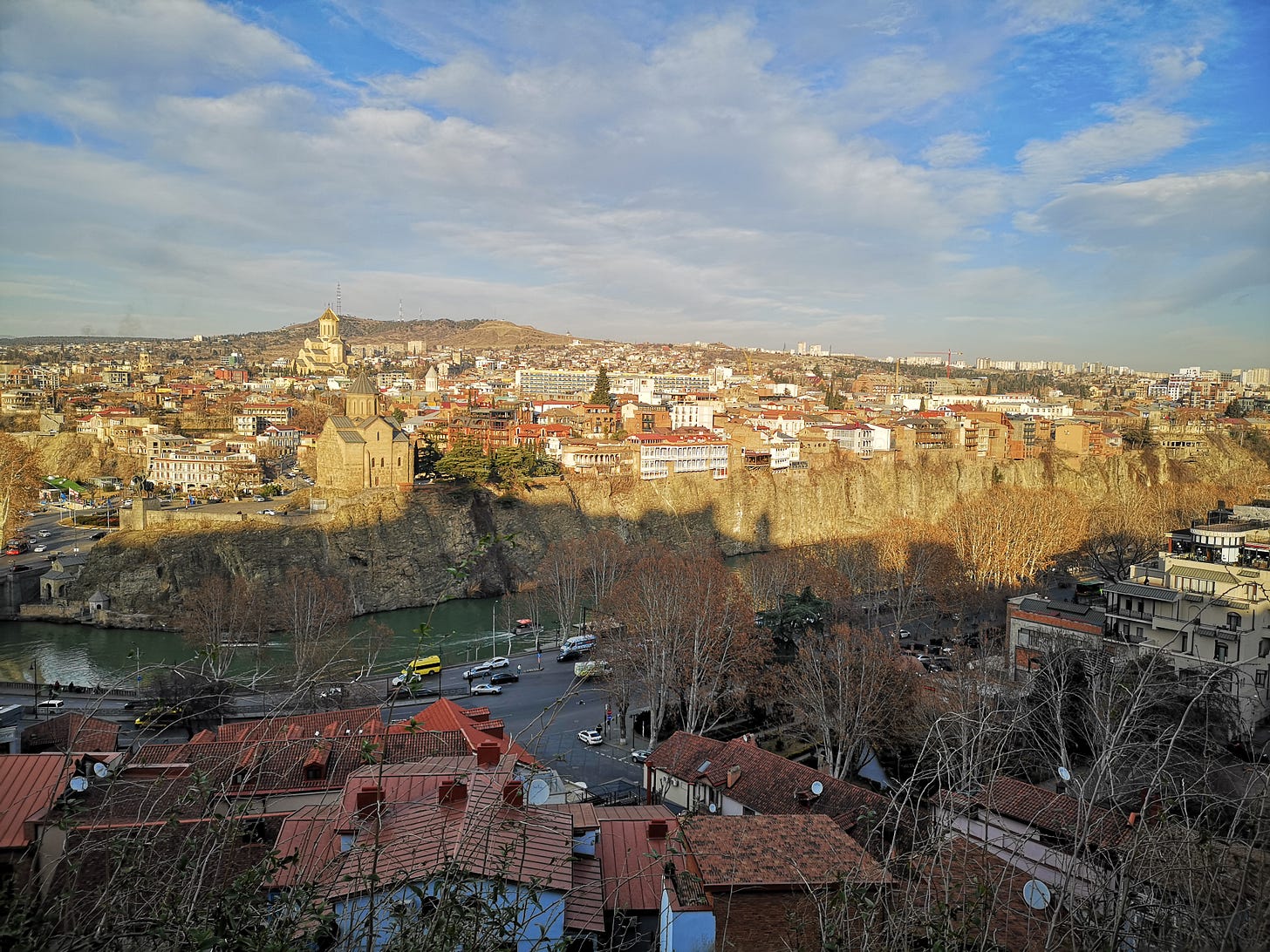Three European cities whose food cultures deserve more credit
And recommendations for my favourite bars, restaurants and markets in each
Today’s post is a story of two halves. The first half is available for everyone but I’ve put my food and drink recommendations for each city behind the paywall as a paid subscriber perk.
Before we lived in Portugal, my husband and I spent three years travelling full-time. We really committed to it, selling our house, business and nearly all our possessions.
After a while, we realised that what we really wanted from our newfound freedom was to spend most of our time in our favourite European countries (which uncoincidentally happen to be big winemaking powerhouses) France, Spain, Italy, and Portugal. Places we loved and felt at home in.
Brexit had other ideas. We managed six months in Spain before third-country rules kicked in, and we had to leave the Schengen zone. This was no bad thing, it made us move our asses from our comfort zone and see other countries and experience other things.
That’s how we found three of our new favourite cities. Tirana in Albania, Zagreb in Croatia (which has since entered the Schengen zone) and Tbilisi in Georgia.
I’ll be honest, apart from Tbilisi — I already knew about its great food scene — I didn’t have high hopes for Zagreb or Tirana, food-wise. But one of the big things travel does is challenge your assumptions. It turns out all three cities have excellent food. The sort that keeps you in a place longer than you expect, or returning again and again.
Before we get started, if you have five minutes, my “shape-the-future-of-The-Sauce” survey is still active, and I’d love to hear your thoughts on how to make The Sauce the very best it can be:
Tirana, Albania
I remember when a British Albanian told me Albania’s three main exports are drugs, guns and people.
This is certainly its reputation on the global stage. People think it’s dangerous and filled with gangs and mafia.
The reality is that Albania has a higher safety index than Italy, Australia, Canada, and yes, the United Kingdom and the US. The country is also built on a belief system called Besa, which loosely translates as a pledge of honor:
People get Albania wrong all the time. I did too, especially when it came to their food. I assumed that Albianian food would be more influenced by Eastern Europe — meat, potatoes things things that fill you up — than anywhere else.
The reality is that Albania has an incredibly diverse cuisine with influences from both East and West Europe as well as the Middle East.
I spent about six weeks in Tirana across two visits. The latter one happened almost exclusively because I wanted to eat my way across the city again.
Albania is still a poor country (the fifth poorest in Europe) and whilst that comes with huge disadvantages, one of the advantages is that its food systems aren’t as globalised as some of its richer neighbours. In the chain supermarkets for instance, you’ll find yoghurt and cheese made by a farm just a few kilometres away.
There is also an emphasis on organic farming — you’ll find bio shops everywhere as well as independent greengrocers and butchers.
Quality rules here and that is reflected in the restaurant culture of the city.
The first thing to do is find a zgara — grill restaurants specialising in meats cooked over coal. But it’s not just about the meat. It’s also about the pillowy homemade breads slathered in oil and grilled until smoky grill lines scorch their surface. It’s about the grilled vegetables, smoky and yielding.
It’s also, if this is your jam, about the one-Euro beers that accompany the feast.
The second thing to do is to seek out some of Tirana’s local dishes like Fergesë — a summer dish of roasted tomatoes, peppers, onion, garlic and feta cheese
Or Tavë Kosi, baked lamb in yoghurt.
The third thing to do is to book your ticket there.
Tbilisi, Georgia
I am a firm believer that to know Georgian cuisine is to love it. A six-week stint in Tbilisi confirmed this for me. I could. Not. Stop. Eating.
Much like Albania, Georgia has a strong emphasis on self-sustainability and local ingredients. The best thing, however, is how unusual some of these ingredients are. Blue fenugreek, for instance, is a staple spice of the country, but it’s not exactly something you can pick up in your local Tesco.
In Tbilisi’s massive Dezerter Bazaar, you’ll find buckets of pickled jonjoli — also known as Caucasian bladdernut — a herb native to the southern Caucasus mountains. It’s eaten everywhere in Georgia, but again, you’re probably not going to find it at Trader Joe’s.
My favourite discovery was roasted Kakhetian sunflower oil, which has a taste similar to toasted sesame oil. I searched far and wide for a bottle to take away until a friend told me it’s not easy to buy as a consumer unless you visit the Kakheti region. I finally struck sunflower gold whilst visiting Telavi — a town in the heart of Kakheti — where a very nice old lady sold me her homemade oil in a Coca Cola bottle.
I wish I’d bought five more.
Then there is the rest of the food. Khinkali, Georgia’s famous dumplings that come with an eating ritual of their own (a few grinds of black pepper, bite a hole in the bottom, suck out the juices, eat, leave the top).
Or Khachapuri, homemade breads stuffed with cheese. Or Georgian salads — ripe tomatoes, crunchy cucumbers, a healthy amount of that sunflower oil, cilantro and walnuts. Or the hole-in-the-wall bakeries where shoti bread is baked on the walls of a tandoor-style oven.
It’s enough to have me searching for the next flight out there.
Zagreb, Croatia
The first thing I did during my first monthly stint in Zagreb was eat a souvlaki.
It wasn’t very Croatian of me, but it was excellent and was the start of discovering Zagreb’s diverse food scene. One that stretches beyond cevapi and štrukli — as amazing as these mini meat kebabs and cheesy pasta bakes are.
Zagreb is often overlooked by tourists who make a beeline for the warmer Dalmatian coast and islands. This is a bitingly cold city in the winter and scorchingly hot in the summer. Its architecture is a blend of richer central European cities like Vienna and Eastern European urbanity.
It’s a melting pot, and you feel that in its food and drink scene. There are shacks where old women will sell you slices of cheese-stuffed burek next to Michelin-star restaurants. There is only one decent wine bar, but it is very good. There are old beer halls and modern craft beer bars. Its specialty coffee scene is better than many other capital cities like Rome (seriously).
Central Dolac market was one of my favourite places to buy produce, both for its affordability and its quality. Not to mention the amazing just-post-Yugoslavia-era signs that still adorn some of the stalls:
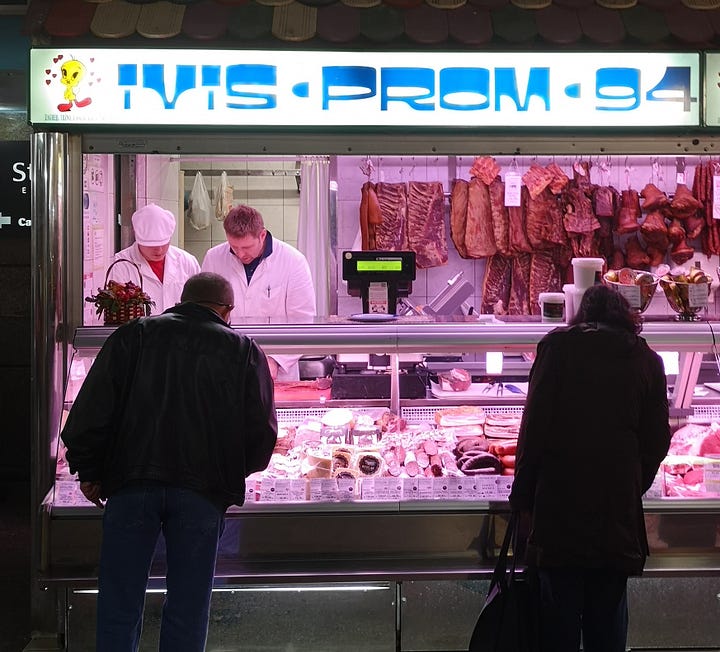
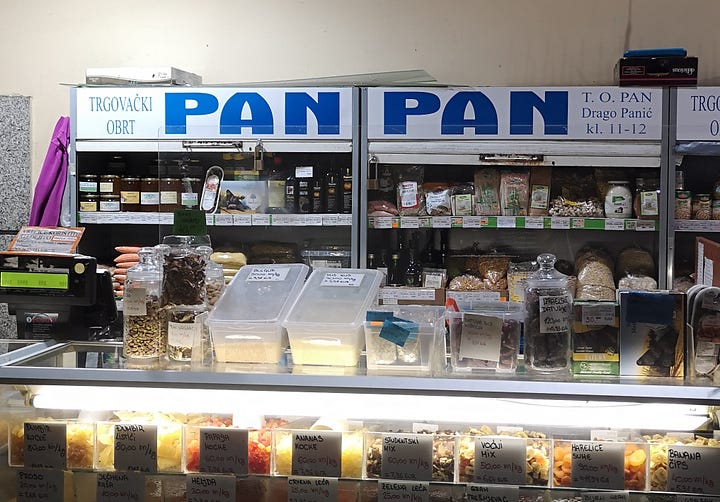
Price-wise, things have risen since Croatia introduced the Euro in 2023 but it’s still an affordable city if you know where to look. And look I suggest you should.
A handful of recommendations
Bars, shops, restaurants and markets to know about.
Keep reading with a 7-day free trial
Subscribe to The Sauce to keep reading this post and get 7 days of free access to the full post archives.




